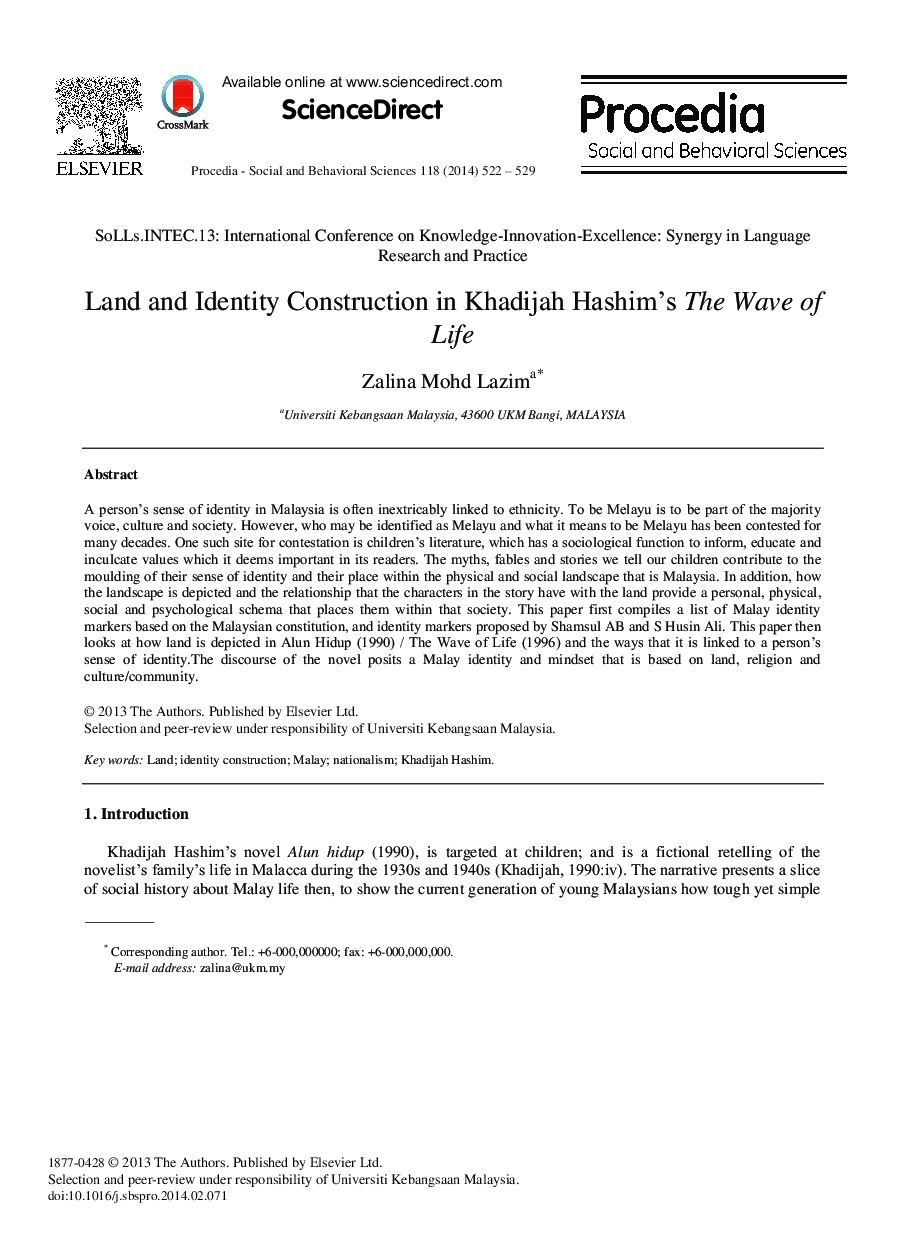| Article ID | Journal | Published Year | Pages | File Type |
|---|---|---|---|---|
| 1115772 | Procedia - Social and Behavioral Sciences | 2014 | 8 Pages |
A person's sense of identity in Malaysia is often inextricably linked to ethnicity. To be Melayu is to be part of the majority voice, culture and society. However, who may be identified as Melayu and what it means to be Melayu has been contested for many decades. One such site for contestation is children's literature, which has a sociological function to inform, educate and inculcate values which it deems important in its readers. The myths, fables and stories we tell our children contribute to the moulding of their sense of identity and their place within the physical and social landscape that is Malaysia. In addition, how the landscape is depicted and the relationship that the characters in the story have with the land provide a personal, physical, social and psychological schema that places them within that society. This paper first compiles a list of Malay identity markers based on the Malaysian constitution, and identity markers proposed by Shamsul AB and S Husin Ali. This paper then looks at how land is depicted in Alun Hidup (1990)/The Wave of Life (1996) and the ways that it is linked to a person's sense of identity.The discourse of the novel posits a Malay identity and mindset that is based on land, religion and culture/community.
